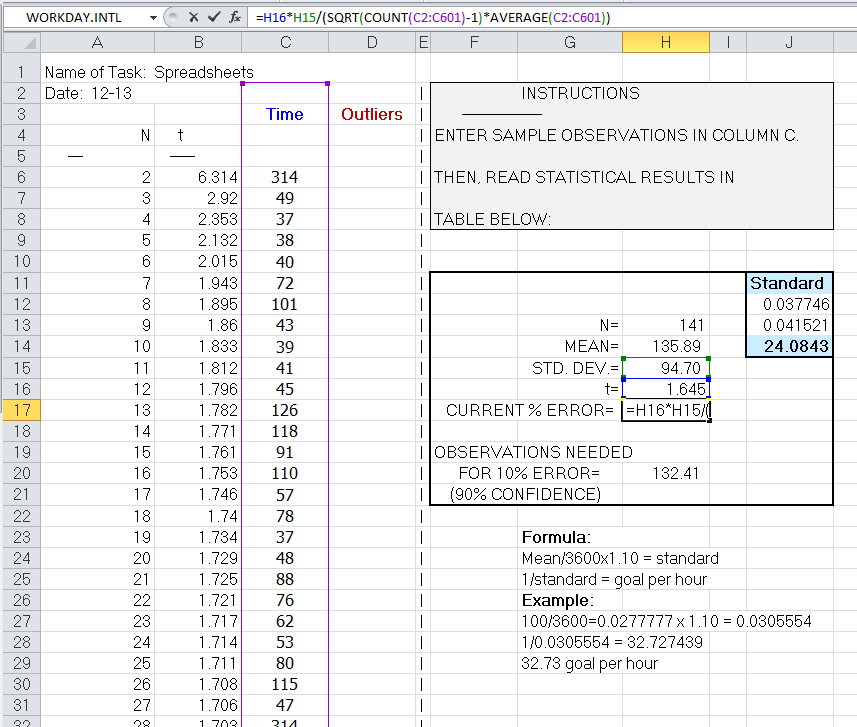I've recently come across an old Excel sheet that is used to help assess whether someone has collected enough samples when performing a time study (essentially trying to figure out the distribution of time required to complete a task). In the data column (labeled "time"), the person performing the time study enters the length of time it took to complete a task, with each row representing one trial. The sheet contains the following formula, labeled "Current % Error":
\begin{equation}\frac{t \sigma}{\mu \sqrt{n-1}}\end{equation}
where $t$ is a t-score which varies based on sample size, $\mu$ is sample average, and $\sigma$ is sample standard deviation.
My question is, what algorithm is this? I know that we can measure confidence intervals using the similar equation $\mu \pm \frac{t \sigma}{\sqrt{n-1}}$, but I'm not sure what's being calculated when we divide by the mean. What does this correspond to, if anything?

